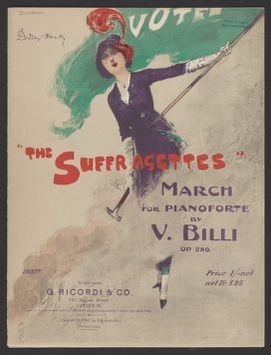Your cart is currently empty!

Women in Waynesboro Vote as Early as 1911

This year, 2020, marks the 100th anniversary of the 19th Amendment’s ratification in 1920, which gave some, not all, women the right to vote in the United States. The path to the 19th Amendment was not easy. Women achieved their goal by raising their voices, attending marches, writing letters and signing petitions, etc. Women in Waynesboro were not secluded from the Suffrage movement. In May of 1917, women’s rights advocate and organizer of the National American Women Suffrage Association, Eudora W. Ramsay, traveled across Virginia to speak to women and men in their hometowns. According to documents housed at The Library of Virginia, Ramsay visited Waynesboro and Basic City in May of 1917. Her report for the National American Women Suffrage Association shows that she spent the 29th advertising meetings in Waynesboro and Basic City. On the 30th, she held two meetings. Eight attended the first meeting, and thirty participated in the second meeting. There are no remarks listed in the collections, sales from kit, literature, and signers’ columns for Waynesboro and Basic City. An expense account records that Ramsay spent fifty cents on cleaning a hall in Waynesboro. Currently, the Heritage Foundation does not have any information about who attended the meetings or what took place during them. If you have any information that would help us learn more, please let us know! Check your family history and attics!

So, if women didn’t receive the right to vote until 1920, how did women in Waynesboro vote in 1911? As it turns out, the Waynesboro Town Charter, amended by the General Assembly of Virginia, allowed for “any person, male or female, twenty-one years of age, and owning real estate in the town, shall have the right to vote in such election” provided, that no freeholder shall have the right to vote in such election until his or her name shall have been duly registered in a special registration book at least ten days prior to such election.”
The Waynesboro town charter gave a limited number of women the chance to vote on May 9, 1911. They would vote on whether or not bonds up to $8,000 could be sold to update Waynesboro school facilities. The news of women voting made newspaper headlines in several states. The Staunton Daily Leader in Staunton, Virginia, wrote, “Nor only have the men to do with the matter but the good women of Waynesboro also and in it is involved the Suffragettes’ long coveted privilege-the right to vote.” They also noted, “This feature of the election will give to the campaign a ginger of unusual interest and will be the first instance of Woman Suffrage witnessed in this section of the state.”

In the end, women came to polls and joined the men to pass the vote. In total, there were 51 votes, and only four voted no. To learn more about the Suffrage movement, visit the museum and view the Rightfully Hers pop-up exhibit, presented by the National Archives.
References
(1913) The Suffragettes: March for the Pianoforte: Op. 286. [London N.W.: G. Ricordi & Co., ©] [Notated Music] Retrieved from the Library of Congress, https://www.loc.gov/item/2017562130/.
(1902). Acts Passed at a General Assembly of the Commonwealth of Virginia [Google Version]. Retrieved from https://play.google.com/books/reader?id=qARAAAAAYAAJ&hl=en&pg=GBS.PA1
Tarter, Brent (2020, May 13). On the Road For Woman Suffrage. Virginia Memory Blog. https://uncommonwealth.virginiamemory.com/blog/2020/05/13/on-the-road-for-woman-suffrage/
Newspaper Articles:
(1911), April 10. Women to Vote at Waynesboro. Staunton Daily Leader.
(1911), May 10. Women Vote Better Schools. Staunton Daily Leader.
Leave a Reply